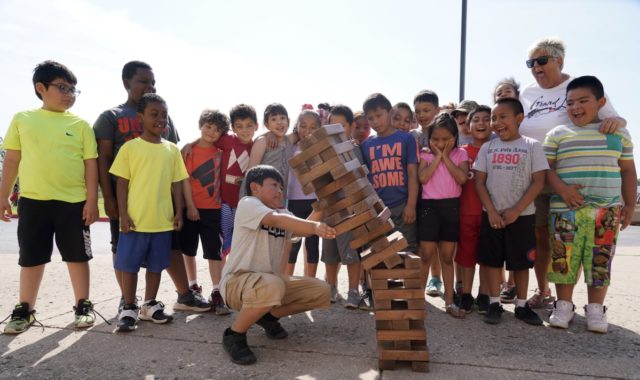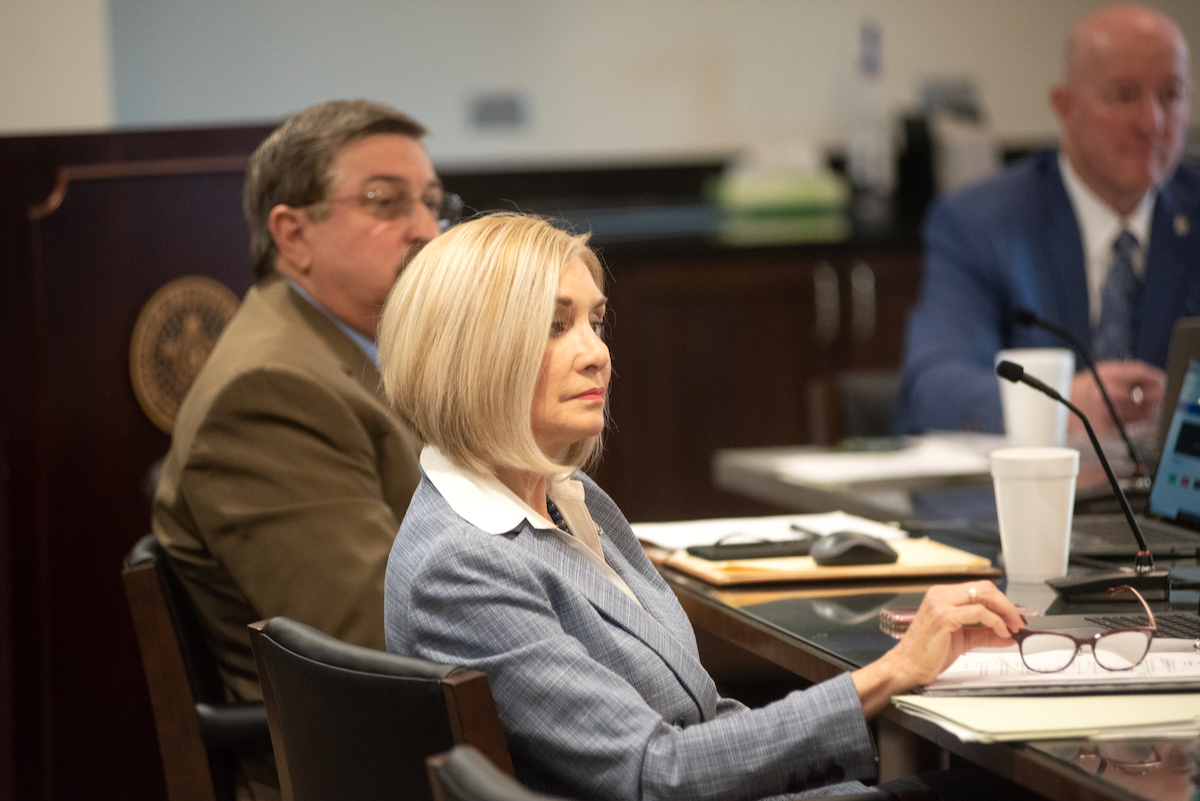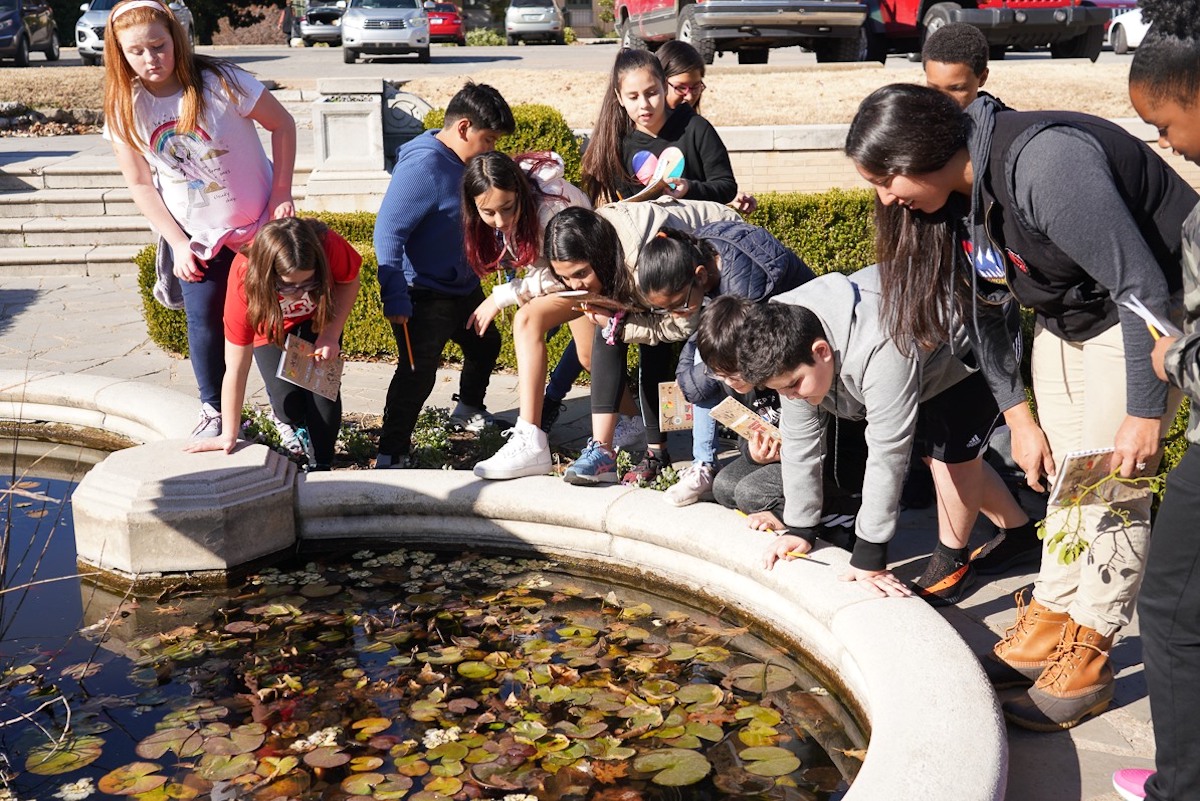
Although multiple school sites can reside within the same school district, the needs of the students and families within them can vary greatly.
Community school initiatives throughout the country focus on partnerships between a school and resources within the community in order to bring those resources into one location for easy access to families.
HB 3374, authored by Rep. Tammy West (R-OKC) and Senate Education Committee Vice Chairman Dewayne Pemberton (R-Muskogee), advanced 78-12 off the House floor Monday. The bill would allow school districts to apply for federal funding that would allow them to employ a resource coordinator for a community school pilot program initiative.
The resource coordinator would become the point of contact when a need arises in the school district. The coordinator would also be tasked with knowing the needs of students and families, as well as what resources are available.
“There’s a need to make sure we’re listening to the families, the teachers and the community as to what is needed in a local school district,” West said of her bill. “It’s becoming increasingly difficult to find that person who can coordinate those needs.”
West, who was elected to the Legislature during her second term on the Putnam City School Board, said HB 3374 grew from conversations she has had over the years. She said the Oklahoma Education Association approached her about available federal funding, up to $100,000 per school district, for this kind of program. However, a state must have a law in statute authorizing the draw down of these federal funds for community school programs.
OEA President Katherine Bishop said her organization has focused on community schools for several years.
“Our schools are the hubs of our community,” Bishop said. “To be a transformation community school is focusing not only on our students’ needs, but our families’ needs and bringing those resources into the schools.”
West said Oklahoma First Lady Sarah Stitt has shown support for the initiative and is tentatively offering resources from her Hope Foundation to coincide with the community schools initiative.
“It’s shaping up to be a very bipartisan piece of legislation,” West said.
Sarah Stitt Hope Foundation executive director Lauren Dunlap said that while nothing is set in stone, the foundation would like to provide leadership training to incoming resource coordinators. Stitt herself told NonDoc that she supports West’s bill.
“I am so excited about the potential for each of our public schools to have a community resource counselor,” Stitt said. “Each community has different needs, so having someone dedicated to connecting students and their families to resources is going to provide a lot of hope.”
West said some districts are already implementing a community school initiative with a resource coordinator owing to donations and the districts foundations, however some simply can’t afford to. If the bill passes, over the next five years West hopes to see more parental involvement, higher student attendance rates and higher graduation rates.
“If we get this across the line this will be one of the most important bills I’ve run,” West said. “This will make a difference for families and for kids.”
‘They felt like students were already not on a level playing field’

While community schools look different based on the needs of the communities they serve, Bishop said the overall concept is based on six principals:
- Strengthened curriculum and academic programs that are culturally relevant and engaging;
- An emphasis on high-quality teaching;
- A shared leadership philosophy;
- Positive behavior practices, such as restorative practices;
- Transformational family, student and community engagement; and
- Coordinated and integrated wrap-around supports, such as health care, eye care and social and emotional services.
Union Public Schools, located in southeast Tulsa and northwest Broken Arrow, kicked off its unofficial community school initiative in 2004. In 2011, the district’s Roy Clark Elementary School was one of three national winners of the Community Schools for Excellence Award by the Coalition for Community Schools.
Union Schools community schools coordinator Kulsum Siddiqui said that, while eight elementary school sites within the district are considered full-service community schools, the entire district operates under a community school model.
West said she used the Union program as a template for her bill.
“The first and foremost responsibility of anyone who coordinates these services is to go to their school community to survey the parents and students and see what that community really needs,” West said. “This is a very local school issue.”
State Department of Education chief innovation officer and deputy superintendent of federal programs Kathy Dodd previously served as an associate superintendent at Union Schools. Dodd was an integral part of getting the initiative off the ground in the early 2000’s.
“The way that it evolved at Union was very much a grassroots effort,” Dodd said. “We had one particular elementary school where it seemed as though students had more challenges at one site than compared to the rest of the district. Teachers were brainstorming ways to remove barriers to student success.”
The brainstorming session led the principal, teachers and support staff at the school to hone in on food insecurity, housing insecurity and the lack of a primary medical home and after-school enrichment activities as issues to address for students and their families.
“When all of the elementary schools at Union converged into the sixth and seventh grade center, and all the students went to one middle school, they felt like students were already not on a level playing field,” Dodd said.
Dodd said they began reaching out for potential community partners to meet these needs. The first community partner to step in was OU Community Medicine, which provided a doctor, a physician assistant and a bilingual nursing assistant in the school. Teachers also voted to give up their break area for a clinic space.
“We already had a school nurse. But sometimes even a school nurse would talk to parents about what she thought the student might need as a next step, but we didn’t really have a way of helping parents navigate that system to ensure a student got an appointment in a timely manner,” Dodd said. “And then shortly thereafter, Family and Children’s Services came into the fold and they provided licensed professional counselors.”
The momentum behind the community schools initiative kept growing, with the Tulsa YMCA joining to provide after-school and health and wellness programming for students.
“When we use the school as the hub in the community, and we build on those trusting relationships with families and schools and begin to add these partners in as needed or as requested by parents and other stakeholders, then we really are living up to that name of being a community school,” Dodd said.
Dodd said the Tulsa Area Community Schools Initiative was established around 2012 and allowed the Union Schools district and Tulsa Public Schools sites with similar demographics to collaborate within the city and build on the memorandums of understanding with community partners.
“It expanded our efforts to two districts and allowed us to be thought partners,” Dodd said.”
Follow @NonDocMedia on:
‘Students cannot succeed unless their families are successful’

Siddiqui said her role as the Union Public Schools community schools liaison involves supporting the eight community school coordinators in the district through resource development.
“I’ve been fortunate enough where I haven’t had to navigate the social service system. But when our families attempt to do it, it’s very complex, it’s very disjointed. Especially if you don’t speak the language, if you’re an immigrant or if you’re undocumented,” Siddiqui said. “We try to bring as many of those services to the school and, of course, our community school coordinators can help guide our families through some of those services if we don’t have them at the school level.”
Siddiqui echoed the sentiments of West and Bishop, saying that one of the most important aspects of the community school model is listening to families and not assuming their needs. School sites determine what resources their families are in need of through surveys.
She referenced a recent partnership with Emergency Infant Services where the organization installed about 25 car seats for new immigrant families. She said the coronavirus pandemic had given the district’s resource coordinators new considerations regarding nutrition and finances for their families.
“What we realized was our parents have the same need. If their children don’t have access to healthy food, chances are the adults in the household are also struggling with food insecurity,” Siddiqui said. “We partnered with Hunger Free Oklahoma. Our child nutrition team distributed meals for children, and in the same line we distributed meals that were prepared by a local chef for adults that were more adult-oriented.”
Siddiqui said that since her district’s immigrant and undocumented families were ineligible for federal aid, like child tax credits, she connected them with local agencies to provide direct financial support. She said about 170 families were provided with $500 through these partnerships.
“The community schools model takes a two-generational approach,” Siddiqui said. “Students cannot succeed unless their families are successful.”





















